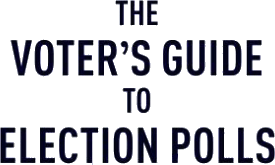
Completely revised and updated Sixth Edition
Everything you need to know about election polls can be found in this compact, conversational, and current volume. When it comes to tapping the public’s opinion on candidates and issues at the ballot box, the stakes are high. Acclaimed scholars Michael W. Traugott and Paul J. Lavrakas—who also have regularly conducted polls, not just studied them—cover the latest technologies used for data collection and data analysis, including internet polls, as well as how polls are used in campaigns and media organizations.
Sample entry from Chapter 2
HOW MANY KINDS OF ELECTION POLLS ARE THERE?
There are several distinct kinds of election polls. They differ in their purpose, their methodologies, and their timing. Polls are used to assess the voters’ issue positions and their knowledge about the candidates. The relative standing of the candidates is evaluated through trial heats. These polls are usually conducted with samples of adults eighteen years of age or older or samples of registered voters.
As Election Day approaches, the samples employed in election polls switch to likely voters, that is, those who are most likely to go to vote on Election Day – an important distinction because only slightly more than half of the eligible adults in the United States actually vote in a presidential election, and even fewer in a less salient election. Some media organizations conduct interviews every day within a certain time period with smaller samples of such voters each day and then aggregate the data for several successive days into a larger dataset. These tracking polls focus on who is ahead and behind and how these preferences change across relatively brief periods of time in response to campaign events. Prior to 2010, most pre-election and tracking polls were usually conducted on the telephone, although since then most are re conducted via the internet.
On Election Day itself, interviewers distribute self-administered questionnaires to voters leaving the balloting locations in their neighborhoods in scientifically selected samples of precincts. These exit polls, consisting of questions that appear on both sides of a single page of paper, are analyzed to produce estimates by early evening of who is going to win each race: they also provide data for post-election analysis of the factors that led voters to support one candidate over another.
